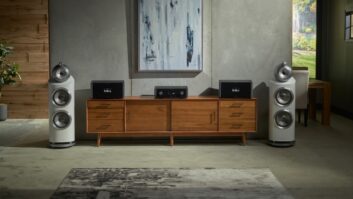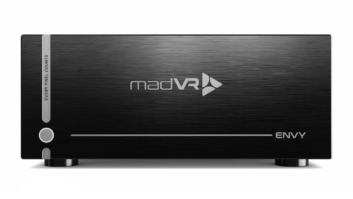Faced with a slowdown in consumer spending this year and continuously aggressive competition from national chains, the industry’s buying groups remain optimistic that their members can fend off these threats and finish 2001 on a good note.
Innovation will save the day, many groups say, as their customers keep returning for the newest in digital technologies and energy-efficient appliances. Although some groups admit to flat sales in the first quarter, many believe their high level of customer service, installation capabilities and increased market share due to other companies folding will allow them to ride out the current wave of economic woe.
In addition to external pressure in the marketplace, the first quarter has been turbulent for a couple of groups, due to losses in membership. In one case, Associated Volume Buyers (AVB) lost its Southwest chapter, which chose to break away and form an autonomous group, called Retail Dealers of America (see story, p. 1). That leaves the group shy some 380 members, effective May 1.
On the flip side, Best Brands Plus merchandise manager Rick Bellows said, despite all of the challenges facing the industry, his group is growing now by an average of 25 new members per month. Since 1999, the group has increased from 450 members to 550. Half of the new members are coming from other buying groups, while the other half are from the furniture sector, which doesn’t have a buying group system in place, he said.
The group reported first-quarter sales down, compared with the same period in 2000 but higher than the industry numbers overall. Bellows attributed some of that growth to Wards’ and Roberds’ closings, as well as Circuit City exiting the appliance category.
“I think Sears was probably a big winner in [the Circuit City decision], but I also think the independent dealers got their fair share,” he said.
On the other hand, Bellows pointed to the growth of Home Depot, Lowe’s and Wal-Mart as the group’s biggest obstacle. This and continued concern over partnering with vendors are areas the group is focusing on. “Vendors keep raising the bar in terms of individual dealer volume,” he said.
To combat those problems, Best Brands Plus works to have “a clear direction in terms of the membership,” Bellows said, providing its members with a merchandising plan, as well as marketing and advertising support. To simplify their members’ jobs even more, the group recently transitioned to completely electronic operations. In addition to buying and billing over the Internet, each member has its own Web site that contains the ability to sell direct to the consumer.
Associated Volume Buyers (AVB) is another group increasing its marketing and advertising efforts. Executive director Bob Lawrence said the group currently is striving to build the Brand Source name, which it thinks should squelch some competition from the national chains—the group’s largest challenge.
With uniform interior and exterior signage on 90 percent of its members’ stores thus far and network TV advertisements planned for the whole year, Lawrence said, the group hopes to gain consumers’ loyalty. “Building a brand name…is a real powerful tool. Not only that, but it gives us more storefronts than any other box store out there,” he said.
He gave Best Buy’s acquisition of Magnolia Hi-Fi as an example of the threat from big-box dealers, explaining that it puts Best Buy in the high-end category, which in the past had been exclusively the smaller retailers’ arena.
Recent closures have helped the independents—but it’s also helped Sears, he emphasized.
“If we look at our first-quarter business vs. where the industry is, we’re definitely increasing share,” Lawrence said. “There is no doubt in my mind that Sears is getting some.”
Despite a slow January and February, the group’s sales turned around in March. The Federal Reserve Bank’s recent decrease of interest rates should help the rest of the year, he said. “I think it’s going to be a very good year ultimately.”
At the Progressive Retailers Organization (PRO Group), the sales trend went against the tide. Executive director Roger Heuberger said that January and February sales were good, but a slowdown hit in March and April. Although video is consistently stronger than the group’s audio or car categories, he said all sectors sagged in April.
The group experienced some leadership changes in January, when it elected Ovation Audio/Video principal Gary McCormick as president of the high-end buying organization.
McCormick succeeds Jim Tweten, president of Magnolia Hi-Fi, which left the group after being acquired by Best Buy. According to Heuberger, Magnolia’s change of ownership triggered a group bylaw requiring the dealer to reapply for membership and the invitation for re-admission was not extended.
He said PRO won’t actively seek to fill Magnolia’s void. “The group is financially stable,” he said, citing projected 2001 sales of $1.7 billion and the addition of more than 30 storefronts this year—which will bring the total up to more than 250 units in 40 states.
“Losing Magnolia Hi-Fi affected us, in that we lost $100 million. But in 2000, the group added via new membership, nearly $180 million,” Heuberger said. “Our $1.7 billion in volume is after you take the Magnolia Hi-Fi out.”
Some of those additions came from the group’s second-largest member, Tweeter, which has had a number of acquisitions in the last year, he said.
NATM also experienced a loss, when one of its members, American Appliance, closed its doors in late April.
“It’s certainly not healthy for our industry and there’s obviously no benefit to NATM because we lost volume there. Between losing Bill [Rowland, Jr., American’s president/CEO], Roberds and canceling four or five memberships, our volume is going to be dramatically less, and it’s not something we can make up,” executive director Bill Trawick said.
“We will hopefully regain volume in time and look forward to new growth. Our members H.H. Gregg, Conn’s, R.C. Willey and Nebraska Furniture Mart are all opening new stores, and we still have a major impact in the market we play in,” he said. “We’re not looking for new members [to replace American]. We’re down to 11 members, but they’re still the 11 strongest independent dealers in the industry and a lot of the money for the store openings is being generated by our members’ current businesses.” The group had 17 members at the end of 1999.
Adding to matters, at its meeting in early March, the group reported first-quarter electronics/appliance sales were flat at best.
Jerry Throgmartin, president of NATM and president of member H.H. Gregg, said that during January and February “business has been so-so. Some members are up a percent, others are down a percent. In general, video has been pretty good, but appliance sales have been soft.”
He added that NATM expects 2001 to be “a decent year with a rebound in the second half. I don’t think that business is that tough. It isn’t a ‘jump in the foxholes’ situation, and it won’t last for the whole year. Housing starts are growing again, which means that appliance sales will improve. And HDTV is driving video. While unit sales might be off we are making more money because we are moving to 52-inch sets vs. 19-inch units. You don’t have to sell dramatically more digital sets to make more money.”
At MARTA’s semiannual meeting in February, executive director Warren Mann said that digital CE products should continue to do well this year and that independent major appliance retailers may have weathered the worst of the distribution storms of 2000. The group’s 120 members operate 400 storefronts nationwide.
“In January business picked up because our supply [in CE products] went up. At the same time, manufacturers got aggressive in price, so there were good deals for our guys,” Mann said. On the CE side, big-screen TV, HDTV and digital-ready set sales are on the rise. In projection TV sets, he said, “Digital projection TVs are half of our business now.”
When asked if the departure of Circuit City was good for MARTA’s members, Mann said, “The exit was good for our people, and bad, all at the same time. Manufacturers had to go and get volume, and prices went down. We had a lack of time to re-merchandise our floors vs. the self-service guys. Now we have had the time to do that and are reaping the benefits.”
At Nationwide TV & Appliances’ meeting in February, its leaders echoed the other buying groups, relishing Circuit City’s exit from the appliances segment and Montgomery Ward’s closing shop. Executive director Robert Weisner said those two companies’ departures will put $2 billion back into the market, and independent retailers can vie for that business.
“We think it is the most positive change for the independent appliance dealers in America,” he said, adding that many of the Nationwide retailers in the same markets as Circuit City or Wards have since seen increased sales of 10 percent to 20 percent. Now, he said, “Sears is our biggest enemy when it comes to battling for this additional business.”
As for competition from Wal-Mart, Lowe’s and The Home Depot, Nationwide executives reiterated that the big retailers can’t match the independent dealers’ ability to provide friendly, helpful and complete service.
“Higher-end products have not moved well in Wal-Mart-type stores,” Weisner said, which makes the manufacturers dependent on the smaller stores.
The 2,159-member buying consortium grew by 106 dealers last year and saw sales rise about 6 percent to more than $7 billion in 2000, he said.
Expanded Internet services, a boosted training program and continued store growth are some of the ways Nationwide leaders plan to continue fighting the national chains.
Most of the members should be networked to this system by summer, Weisner said, and the B-to-B part of the Nationwide Internet plan is expected to be completed by mid-2002. Ultimately, the ordering, tracking and billing processes will be streamlined by connecting each Nationwide member with all of the group’s major appliance vendors.
“We anticipate this to be a savings for the organization,” Weisner said. “Lower costs for the vendors to do business will translate into savings on the part of the dealers.”
In another attempt to be better than the big-box vendors and to tackle the complexity of digital technologies, the buying group spent more than $1 million on developing a training and certification program for all of its members. Last year, it trained 2,000 salespeople in “consumer electronics 101” and 5,000 in video, which includes DVD and audio, Weisner said.
Going forward, the group intends in the next year and a half to train all 18,000-plus member salespeople on the nuances of selling digital products, major appliances and “upscale lifestyle appliances.”













